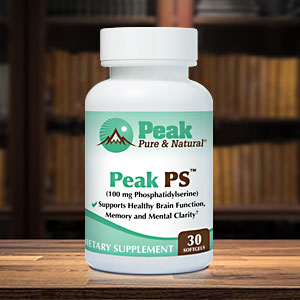Get Easy Health Digest™ in your inbox and don’t miss a thing when you subscribe today. Plus, get the free bonus report, Mother Nature’s Tips, Tricks and Remedies for Cholesterol, Blood Pressure & Blood Sugar as my way of saying welcome to the community!
The surprising thing that could slow getting help after a stroke

At times when I was young and my mother would get angry at me or my sister, she’d sometimes say, “You’re going to give me a stroke!”
Thank goodness, that never happened. Mom is 97 and going strong.
But she wasn’t really off the mark. Chronic stress and the hypertension that can result are a leading cause of stroke.
Here are some statistics that may surprise you:
- One out of every 20 deaths in the United States is the result of a stroke.
- Every 40 seconds, someone has a stroke.
- Someone dies of a stroke every 4 minutes.
- Stroke is the leading cause of disability in the United States.
The fortunate thing is that stroke deaths are often preventable if you act quickly.
Related: 11 stroke signals no woman should ignore
So, it’s important to understand what’s at stake, and just how quickly you need to respond to save a life.
Why seconds count
When you understand what’s happening to someone during a stroke, it’s easy to see why every second counts.
Many people associate strokes with heart attacks since many of the risk factors are similar. But a stroke is more like a “brain attack.”
The vast majority of people who have a stroke (87 percent) have what’s known as an ischemic stroke. It’s the result of a blood clot blocking blood flow to the brain.
When this happens, oxygen is cut off from the affected part of the brain. This causes brain cells to begin to die, and the abilities that those brain cells control, like muscle control or memory, are lost.
What makes things really tough is that a stroke can be “silent.”
As the name implies, a silent stroke can occur without you even knowing it. Usually, there are no symptoms at all. Or perhaps you notice a vague headache, and then it’s gone.
Silent strokes are different from a transient ischemic attack (TIA), or “mini-stroke.” Symptoms of a TIA are transient, meaning they’re there and then they’re gone. Life goes on. Except you don’t quite feel the same.
With both a silent stroke and a TIA, brain damage has still occurred, and it sets you up for greater risk of a full-blown stroke, often not too far down the road.
The important thing to know is that a stroke is a medical emergency. The right treatment and medication can save a life and prevent permanent disability.
But time is of the essence. The drugs that can break up those blood clots must be given within 4 ½ hours of a stroke.
How friends slow you down
You would think that having a close-knit circle of family and friends would guarantee that, if you had a stroke, you’d get to the hospital well within that 4 ½ hour window.
But a recent study showed that the opposite is often true.
The study was conducted by researchers from Brigham and Women’s Hospital and the Center for Public Health Systems Science at Washington University in St. Louis. They surveyed 175 hospital patients within five days of having had a stroke.
What they found surprised them at first. The social networks of “slow arrivers” to the hospital were smaller and more close-knit than those of “fast arrivers.”
Lead researcher Amar Dhand explains it this way: “Closed networks are like echo chambers in which there is a tendency for everyone to agree to watch and wait.”
It’s as if your friends think they’re taking good care of you, so you don’t need to rush off to the hospital. They couldn’t be more wrong.
The bottom line: Don’t wait!
If you have a good social support network, you’re a lucky person. Just make sure they all know the signs of a stroke, and that acting immediately is a must.
Even if they’re not sure, it’s better to go to a hospital and find out nothing is wrong than to wait and find out the worst has happened.
Make sure you, your friends and family remember the acronym BE FAST:
B – Balance lost
E – Eyes blur
F – Face drooping
A – Arm weakness
S – Speech difficulty
T – Time to call 9-1-1
Editor’s note: There are perfectly safe and natural ways to decrease your risk of blood clots including the 25-cent vitamin, the nutrient that acts as a natural blood thinner and the powerful herb that helps clear plaque. To discover these and other secrets of long-lived hearts, click here for Hushed Up Natural Heart Cures and Common Misconceptions of Popular Heart Treatments!
Sources:
- The stroke care paradox: Close-knit social networks increase delays in hospital arrival — Brigham and Women’s Hospital
- Social networks and risk of delayed hospital arrival after acute stroke — Nature Communications
- Stroke Facts — Centers for Disease Control and Prevention













